When dwarves collide
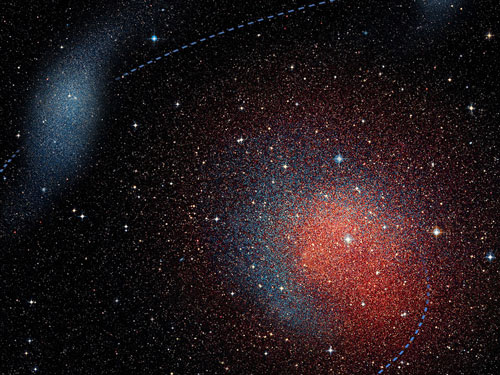 Studying Andromeda II, astronomers observe where little galaxies come from.
Studying Andromeda II, astronomers observe where little galaxies come from.
Feb 25th, 2014
Read more
 Subscribe to our Space Exploration News feed
Subscribe to our Space Exploration News feed
 Studying Andromeda II, astronomers observe where little galaxies come from.
Studying Andromeda II, astronomers observe where little galaxies come from.
Feb 25th, 2014
Read more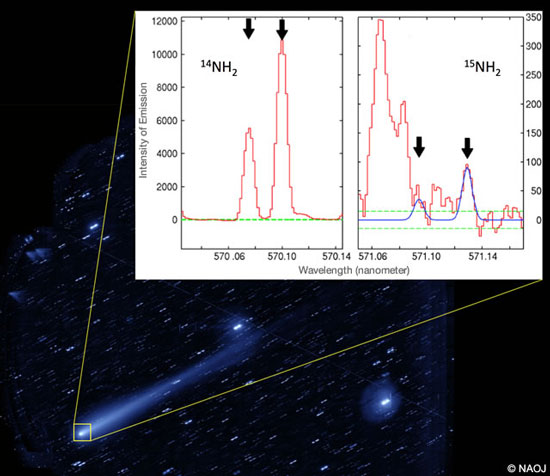 This is the first time that astronomers have reported a clear detection of a relatively rare nitrogen isotope in a single comet and also measured the relative abundance of two different forms of nitrogen of cometary ammonia.
This is the first time that astronomers have reported a clear detection of a relatively rare nitrogen isotope in a single comet and also measured the relative abundance of two different forms of nitrogen of cometary ammonia.
Feb 25th, 2014
Read more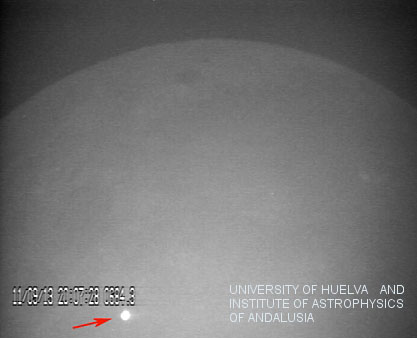 A meteorite with the mass of a small car crashed into the Moon last September, according to Spanish astronomers. The impact, the biggest seen to date, produced a bright flash and would have been easy to spot from the Earth.
A meteorite with the mass of a small car crashed into the Moon last September, according to Spanish astronomers. The impact, the biggest seen to date, produced a bright flash and would have been easy to spot from the Earth.
Feb 24th, 2014
Read more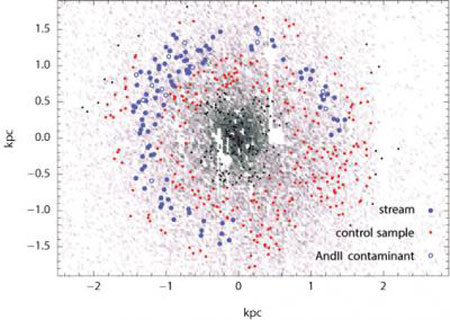 The Andromeda Galaxy is surrounded by a swarm of small satellite galaxies. Researchers from the Niels Bohr Institute, among others, have detected a stream of stars in one of the Andromeda Galaxy's outer satellite galaxies, a dwarf galaxy called Andromeda II. The movement of the stars tells us that what we are observing is the remnant of a merger between two dwarf galaxies. Mergers between galaxies of such low mass has not been observed before.
The Andromeda Galaxy is surrounded by a swarm of small satellite galaxies. Researchers from the Niels Bohr Institute, among others, have detected a stream of stars in one of the Andromeda Galaxy's outer satellite galaxies, a dwarf galaxy called Andromeda II. The movement of the stars tells us that what we are observing is the remnant of a merger between two dwarf galaxies. Mergers between galaxies of such low mass has not been observed before.
Feb 23rd, 2014
Read more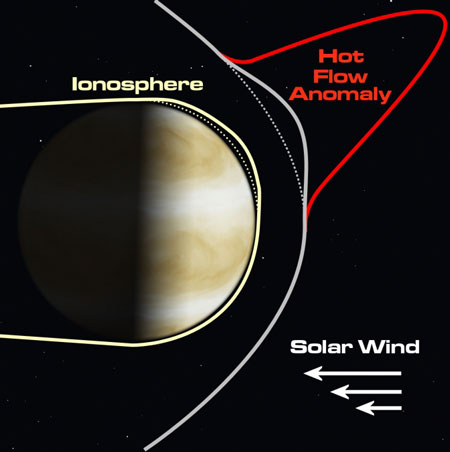 Researchers recently discovered that a common space weather phenomenon on the outskirts of Earth's magnetic bubble, the magnetosphere, has much larger repercussions for Venus. The giant explosions, called hot flow anomalies, can be so large at Venus that they're bigger than the entire planet and they can happen multiple times a day.
Researchers recently discovered that a common space weather phenomenon on the outskirts of Earth's magnetic bubble, the magnetosphere, has much larger repercussions for Venus. The giant explosions, called hot flow anomalies, can be so large at Venus that they're bigger than the entire planet and they can happen multiple times a day.
Feb 21st, 2014
Read more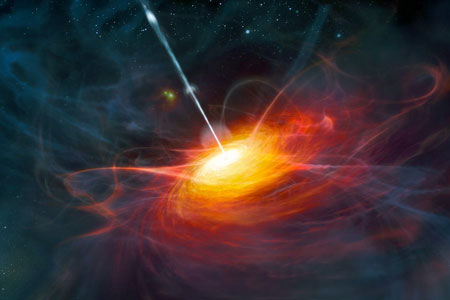 MIT researchers propose using distant quasars to test Bell's theorem.
MIT researchers propose using distant quasars to test Bell's theorem.
Feb 20th, 2014
Read more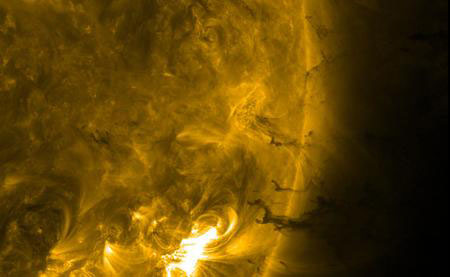 Researchers have studied the behaviour of the Sun's coronal mass ejections, explaining for the first time the details of how these huge eruptions behave as they fall back onto the Sun's surface. In the process, they have discovered that coronal mass ejections have a surprising twin in the depths of space: the tendrils of gas in the Crab Nebula, which lie 6500 light-years away and are millions of times larger.
Researchers have studied the behaviour of the Sun's coronal mass ejections, explaining for the first time the details of how these huge eruptions behave as they fall back onto the Sun's surface. In the process, they have discovered that coronal mass ejections have a surprising twin in the depths of space: the tendrils of gas in the Crab Nebula, which lie 6500 light-years away and are millions of times larger.
Feb 20th, 2014
Read moreThe exploration of planets around stars other than the Sun, known as extrasolar planets or 'exoplanets', is one of the most exciting topics of 21st century science. One of the key goals of this research is to discover and learn the properties of Earth-like worlds in the Sun's neighbourhood. ESA, the European Space Agency, will do this in preparing a new space mission named PLATO.
Feb 20th, 2014
Read more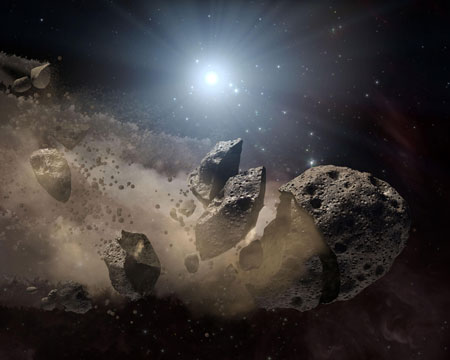 Asteroids hit the Earth, the Moon and even, it seems, distant stars.
Asteroids hit the Earth, the Moon and even, it seems, distant stars.
Feb 19th, 2014
Read more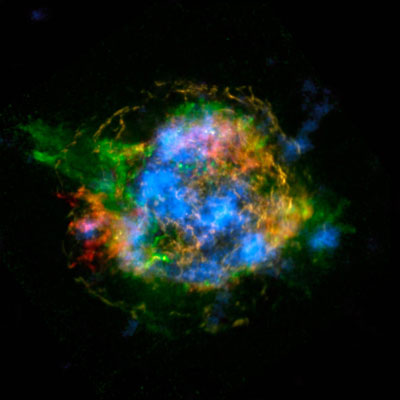 Astronomers have peered for the first time into the heart of an exploding star in the final minutes of its existence. The feat by the high-energy X-ray satellite NuSTAR provides details of the physics of the core explosion inaccessible until now, says team member Steven Boggs of UC Berkeley. NuSTAR mapped radioactive titanium in the Cassiopeia A supernova remnant, which has expanded outward and become visible from Earth since the central star exploded in 1671.^
Astronomers have peered for the first time into the heart of an exploding star in the final minutes of its existence. The feat by the high-energy X-ray satellite NuSTAR provides details of the physics of the core explosion inaccessible until now, says team member Steven Boggs of UC Berkeley. NuSTAR mapped radioactive titanium in the Cassiopeia A supernova remnant, which has expanded outward and become visible from Earth since the central star exploded in 1671.^
Feb 19th, 2014
Read more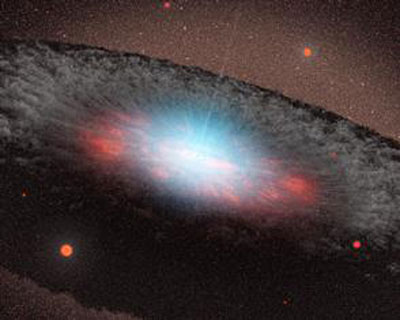 Astronomers see huge clouds of gas orbiting supermassive black holes at the centres of galaxies. Once thought to be a relatively uniform, fog-like ring, the accreting matter instead forms clumps dense enough to intermittently dim the intense radiation blazing forth as these enormous objects condense and consume matter.
Astronomers see huge clouds of gas orbiting supermassive black holes at the centres of galaxies. Once thought to be a relatively uniform, fog-like ring, the accreting matter instead forms clumps dense enough to intermittently dim the intense radiation blazing forth as these enormous objects condense and consume matter.
Feb 19th, 2014
Read morePhysics students at the University of Leicester have pointed out that the huge observational satellite Envisat - which lost contact with Earth in 2012 - could potentially pose a threat similar to the events which plague Sandra Bullock in the Oscar-nominated sci-fi thriller Gravity.
Feb 19th, 2014
Read more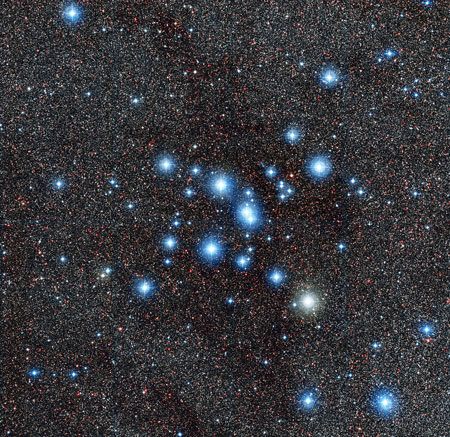 A new image from ESO's La Silla Observatory in Chile shows the bright star cluster Messier 7. Easily spotted with the naked eye close to the tail of the constellation of Scorpius, it is one of the most prominent open clusters of stars in the sky - making it an important astronomical research target.
A new image from ESO's La Silla Observatory in Chile shows the bright star cluster Messier 7. Easily spotted with the naked eye close to the tail of the constellation of Scorpius, it is one of the most prominent open clusters of stars in the sky - making it an important astronomical research target.
Feb 19th, 2014
Read more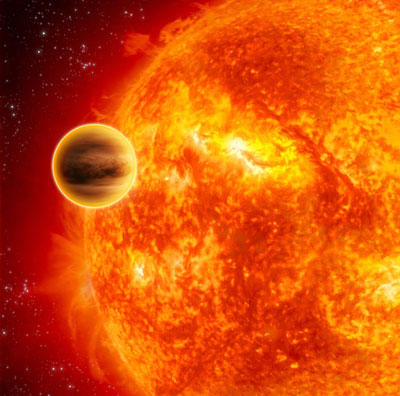 collected, and most of these data are of 'marginal utility,' according to a review of exoplanet research by a Princeton University astrophysicist. The dominant methods for studying exoplanet atmospheres are not intended for planets trillions of miles from Earth. Instead, the future of exoplanet study should focus on the more difficult but comprehensive method of spectrometry.
collected, and most of these data are of 'marginal utility,' according to a review of exoplanet research by a Princeton University astrophysicist. The dominant methods for studying exoplanet atmospheres are not intended for planets trillions of miles from Earth. Instead, the future of exoplanet study should focus on the more difficult but comprehensive method of spectrometry.
Feb 18th, 2014
Read more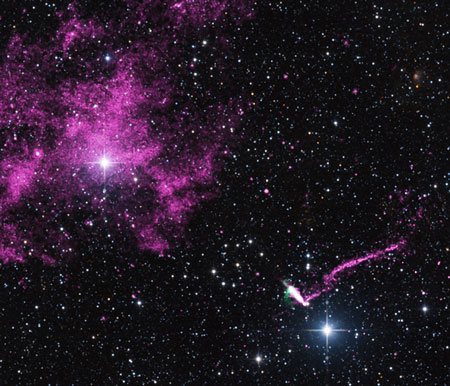 NASA's Chandra X-ray Observatory has seen a fast-moving pulsar escaping from a supernova remnant while spewing out a record-breaking jet - the longest of any object in the Milky Way galaxy - of high-energy particles.
NASA's Chandra X-ray Observatory has seen a fast-moving pulsar escaping from a supernova remnant while spewing out a record-breaking jet - the longest of any object in the Milky Way galaxy - of high-energy particles.
Feb 18th, 2014
Read more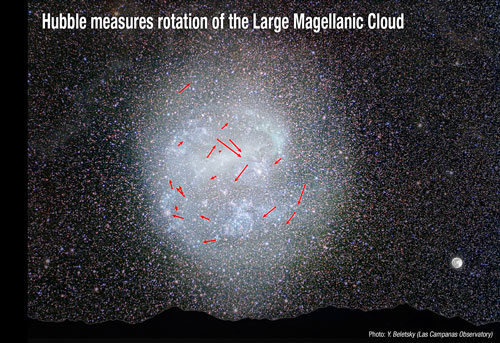 Using the sharp-eyed NASA Hubble Space Telescope, astronomers have for the first time precisely measured the rotation rate of a galaxy based on the clock-like movement of its stars.
Using the sharp-eyed NASA Hubble Space Telescope, astronomers have for the first time precisely measured the rotation rate of a galaxy based on the clock-like movement of its stars.
Feb 18th, 2014
Read more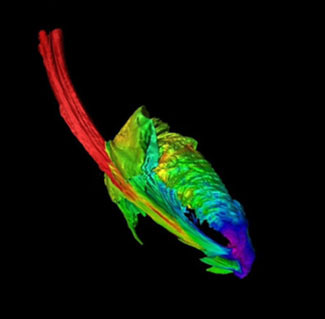 A new study explains what happens during the disruption of a normal sun-like star by a supermassive black hole. The study shows why observers might fail to see evidence of the hydrogen in the star, casting doubt on a 2012 report of the disruption of an exotic helium star.
A new study explains what happens during the disruption of a normal sun-like star by a supermassive black hole. The study shows why observers might fail to see evidence of the hydrogen in the star, casting doubt on a 2012 report of the disruption of an exotic helium star.
Feb 18th, 2014
Read moreSquinting close to the beginning of time, astronomers have discovered an association of gas-rich galaxies near the infancy of cosmic time. It's an early epoch - some 12.7 billion years ago - telling a tale that revolves around an exceptionally dusty galaxy called AzTEC-3.
Feb 17th, 2014
Read more